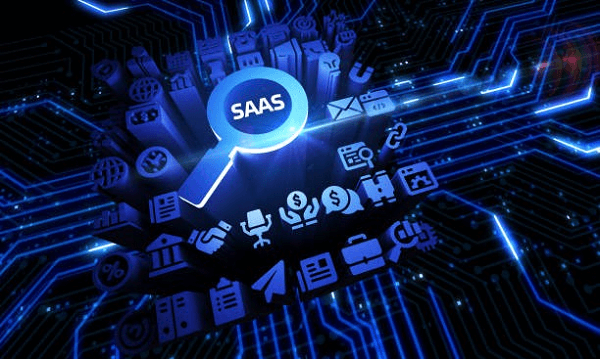Unleashing SaaS Potential: The Art of Marketing Attribution

In the rapidly evolving realm of Software as a Service (SaaS), the digital landscape is replete with opportunities and challenges. SaaS companies navigate intricate customer journeys and engage in fierce competition. The need for strategic decision-making backed by data-driven insights has become paramount. Enter the enigma of marketing attribution—a multifaceted approach that holdas the key to SaaS success.
In the chapters that follow, we will journey through the landscape of SaaS marketing attribution. We’ll explore various attribution models tailored to the SaaS ecosystem and uncover the potential of customized approaches.
We will discuss the pivotal role of multi-touch attribution, the technology that empowers it. We’ll also talk about its transformative impact on campaign optimization. In addition, we’ll address the challenges and future trends that shape the trajectory of SaaS attribution.
Fasten your seatbelts as we embark on a quest to crack the code of marketing attribution in the SaaS universe. A journey that promises to equip you with the insights necessary to make informed decisions, seize opportunities, and lead the charge in the competitive SaaS arena.
Understanding the Landscape of SaaS Marketing Attribution
- The SaaS landscape is marked by complex customer journeys, longer sales cycles, and diverse touchpoints. Unlike traditional products, SaaS interactions involve multiple stages, from awareness to onboarding, making attribution a puzzle that requires intricate solving.
- With customers interacting through various channels and touchpoints, pinpointing the exact source of conversion can be elusive. Standard attribution models may fall short, leading to misallocated resources and misguided strategies.
- In the SaaS sphere, interactions encompass website visits, trial sign-ups, email engagements, and more. Each touchpoint plays a distinct role in nurturing prospects. Understanding the relative influence of these touchpoints is pivotal.
- Successful SaaS attribution involves capturing the entire journey, from first engagement to final conversion. This comprehensive view is crucial for informed decision-making, as it illuminates the touchpoints that truly drive conversions.
These factors underscore the significance of crafting tailored strategies that capture the essence of the SaaS customer journey.
Key Attribution Models for SaaS
Navigating the convoluted landscape of SaaS marketing attribution demands a deep dive into various marketing attribution models. Each offering a unique perspective on customer interactions. Here are some pivotal models that illuminate the path to accurate attribution within the SaaS realm:
First-Touch Attribution
- Attributes the entire conversion to the first touchpoint a prospect engages with.
- Ideal for understanding initial customer discovery but may overlook subsequent interactions that contribute to conversion.
Last-Touch Attribution
- Attributes the conversion solely to the final touchpoint before conversion.
- Provides insight into the point that directly led to the conversion, but neglects the earlier stages of the customer journey.
Linear Attribution
- Equally distributes attribution across all touchpoints in the customer journey.
- Offers a balanced view of touchpoint influence, making it suitable for SaaS journeys with multiple interactions.
Time Decay Attribution
- Assigns more credit to touchpoints closer in time to conversion.
- Well-suited for longer SaaS sales cycles, where recent interactions hold greater significance.
Position-Based Attribution
- Gives the first and last touchpoints more credit, distributing the rest among intermediate touchpoints.
- Offers a compromise between first-touch and last-touch models, acknowledging both initial discovery and final conversion triggers.
In the multifaceted realm of SaaS marketing, selecting the right attribution model depends on the unique dynamics of your customer journey. The selection process involves considering factors such as the length of your sales cycle, the significance of touchpoints at various stages, and the interplay between different channels. The journey, however, doesn’t end with predefined models; it’s a stepping stone to crafting custom strategies that mirror your SaaS DNA.
Customized Attribution Strategies for SaaS
In the intricate world of SaaS businesses, one size rarely fits all. Standard attribution models provide a foundation. However, custom strategies tailored to the nuances of your SaaS customer behavior are the true keys to accurate measurement.
- Analyze past customer journeys to identify trends and patterns in touchpoint interactions. Uncover touchpoints that consistently play pivotal roles across varied customer segments.
- Divide your customer base into segments based on attributes like industry, company size, or usage behavior. Create unique attribution models for each segment to better capture their distinct conversion paths.
- Group customers who converted around the same time into cohorts. Analyze how these cohorts interacted with touchpoints, unveiling evolving trends in attribution influence.
- Blend different attribution models to reflect various stages of the SaaS journey. For instance, emphasize first-touch attribution for awareness and last-touch for the decision-making phase.
- Implement custom attribution strategies and track their performance over time. Continuously refine your models based on data insights to align with changing customer behaviors.
- Modify attribution for SaaS trials and upselling scenarios, considering their unique impact on customer decisions.
The Role of Multi-Touch Attribution in SaaS Growth
In the intricate web of SaaS customer journeys, interactions span diverse touchpoints. Multi-touch attribution emerges as a beacon of clarity. Here’s how it transforms the landscape:
- Multi-touch attribution captures every touchpoint, providing a comprehensive view of the customer journey. Understand the sequence of interactions that guide prospects from discovery to conversion.
- Traditional models may undervalue early touchpoints or overemphasize final interactions. Multi-touch attribution mitigates these biases, offering a balanced perspective on touchpoint impact.
- Uncover touchpoints that consistently contribute to conversions across various stages. Allocate resources strategically by focusing on touchpoints that yield the highest conversion influence.
- Recognize how different channels interact to drive conversions. Identify synergies where touchpoints in tandem yield stronger outcomes than standalone efforts.
- Multi-touch attribution illuminates touchpoints beyond conversion, aiding in post-purchase nurturing. Craft engagement strategies based on the touchpoints that sustain customer relationships.
- Accurate attribution leads to clearer Return on Investment (ROI) calculations for each touchpoint. Demonstrate the value of marketing efforts with data-backed insights.
As SaaS enterprises strive for data-driven growth, multi-touch attribution serves as a compass. It guides marketing strategies with insights rooted in the reality of customer interactions.
Data-Driven Decision-Making with Attribution Insights
In the dynamic world of SaaS marketing, informed decisions backed by attribution tools can be the difference between success and stagnation. Here’s how attribution empowers data-driven strategies:
- Identify high-impact touchpoints, optimizing budget allocation for maximum ROI. Distribute resources where they drive conversion rates most effectively.
- Understand touchpoint preferences of different customer segments. Craft personalized experiences based on insights, nurturing stronger customer connections.
- Continuously assess attribution data to refine campaigns. Adapt strategies based on evolving touchpoint trends and customer behavior.
- Bridging the gap between sales and marketing efforts is critical in SaaS. Attribution data highlights touchpoints that contribute to lead nurturing and conversion, fostering alignment.
- Accurate attribution reveals which touchpoints impact customer retention and upselling. Gauge the long-term value of different touchpoints in sustaining customer relationships.
- Analyze how touchpoints across marketing channels collaborate to drive conversions. Identify opportunities to synchronize efforts for amplified impact.
Challenges and Future Trends in SaaS Attribution
As SaaS marketing attribution evolves, it encounters both hurdles and exciting prospects on the horizon:
Challenges
- Customers engage across devices and platforms, challenging seamless attribution tracking. Overcoming fragmentation is vital for holistic attribution insights for marketing teams.
- Evolving data privacy laws impact attribution data collection and usage. Striking a balance between compliance and accurate tracking is a persistent challenge.
- SaaS customer journeys often span both online and offline touchpoints. Integrating data from physical interactions with digital pathways is an ongoing puzzle.
Future Trends
- Artificial Intelligence enhances attribution models through predictive analysis. Machine learning identifies intricate patterns, refining attribution accuracy.
- Integration of attribution data across platforms streamlines insights for marketing campaigns. Single platforms offer a comprehensive view of customer interactions.
- Dynamic mapping of intricate customer journeys becomes more precise. Visualizing touchpoints aids in identifying optimal engagement strategies.
- Efforts to bridge offline and online interactions intensify. Holistic attribution insights are achieved by seamlessly tracking cross-channel engagements.
As SaaS attribution advances, embracing these trends and overcoming challenges will shape the landscape of data-driven decision-making.
Conclusion
In the intricate dance of SaaS marketing, customer journeys weave across touchpoints, marketing attribution emerges as the guiding light. A compass that steers your strategies toward success. Through this journey, we’ve unveiled the significance of attribution in deciphering the SaaS code and harnessing its transformative power.
From understanding the complexity of SaaS journeys to exploring diverse attribution models and crafting customized strategies, we’ve navigated the dynamic landscape. Multi-touch attribution has emerged as a cornerstone, offering a panoramic view of interactions and illuminating the synergy between channels.
Armed with attribution insights, data-driven decision-making comes to the forefront. It fuels budget allocation, fuels personalized engagement, and nurtures seamless collaboration between sales and marketing. Challenges like data privacy and the promise of AI-driven attribution models beckon, guiding us toward even greater precision.
As you embark on your SaaS attribution journey, remember that this is not the destination—it’s a continuous evolution. Your commitment to accurate attribution and adaptive strategies will propel your SaaS venture to innovation, growth, and customer success.
Navigate the complexities, embrace the trends, and script a story of SaaS triumph that resonates in the digital realm and beyond. The journey continues—may your attribution insights light the way.





